Musée
Jacquemart-André
A place of history
Built at the end of the nineteenth century in Haussmann’s new Paris by Edouard André and his wife Nélie Jacquemart, a couple of major collectors, this private mansion (hôtel particulier) enables visitors to discover genuine nineteenth-century rooms and temporary exhibitions that are international in scope.
1833
Edouard André
Edouard André was born on 13 December 1833 into a family of wealthy Protestant bankers from South-East France that flourished during the Second Empire.
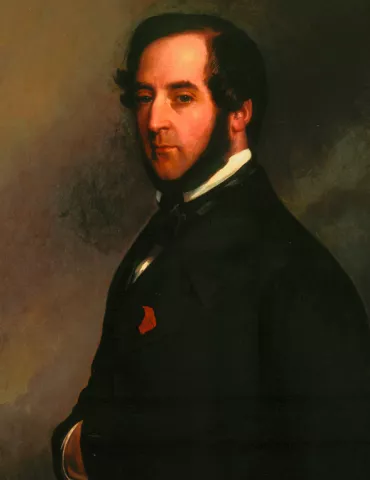
Fermer
D'après Franz Xaver Winterhalter, Portrait d’Ernest André, vers 1850, huile sur toile, Musée Jacquemart-André, Paris - © Institut de France / Culturespaces
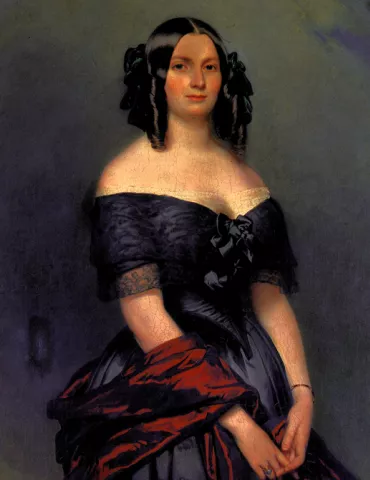
Fermer
D'après Franz Xaver Winterhalter, Portrait de Louise Mathilde Cottier, vers 1850, huile sur toile, Musée Jacquemart-André, Paris - © Institut de France / Culturespaces
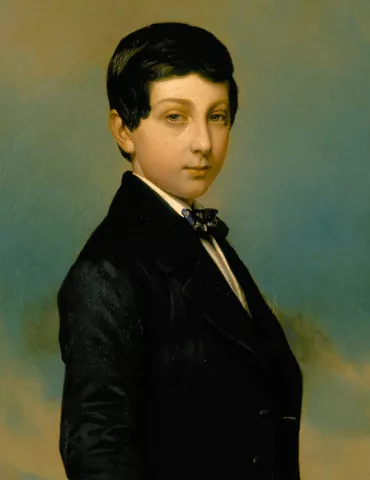
Fermer
D'après Franz Xaver Winterhalter, Portrait d’Edouard André, 1845, huile sur toile, Musée Jacquemart-André, Paris - © Institut de France / Culturespaces
At the beginning of the nineteenth century, Dominique André, Edouard’s grandfather, moved to Paris and collaborated with François Cottier, who assisted him with the business of the Banque André. Both men decided that it would be a good idea to unite their families through the marriage of their children: Ernest André and Louise Mathilde Cottier. Edouard was the couple’s only child.
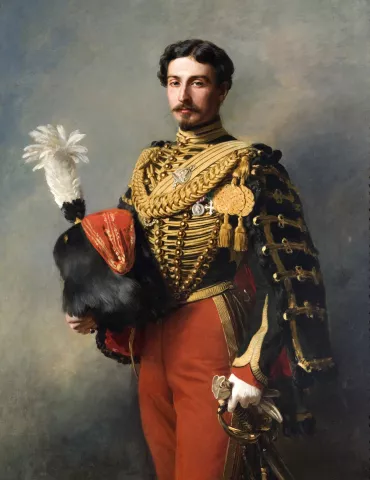
Fermer
Franz-Xaver Winterhalter, Portrait d'Edouard André en uniforme des guides de la Garde impériale, 1857, huile sur toile, Musée Jacquemart-André, Paris - © Culturespaces / C. Recoura
At the age of eighteen, he was admitted to Saint-Cyr, from which he graduated as an officer in one of the elite corps responsible for Napoleon III’s protection. But, with his preference for the splendour of the Cour des Tuileries, he decided to leave his post. In 1864, he took up his father’s seat as a member of the National Assembly and lead a very Parisian life.
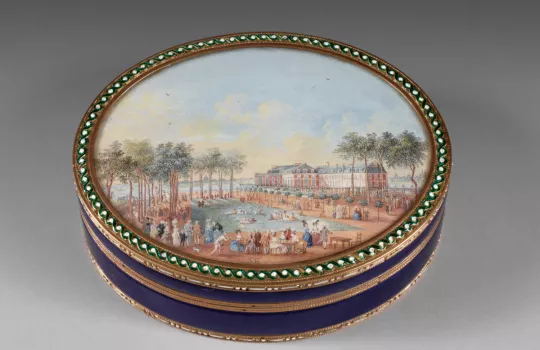
Fermer
Henri-Désiré Van Blarenbergue, Boite : Vue du jardin public de l’Arsenal, miniature peinte sur velin, or guilloché, émail, doublée d'écaille, 5 x 6,5 cm, Musée Jacquemart-André, Paris - © Institut de France / Studio Sébert Photographes
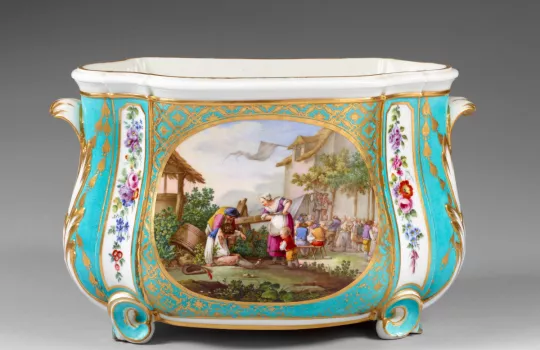
Fermer
Manufacture Royale de porcelaine de Sèvres/décor de Charles-Nicolas Dodin, Cuvette faisant partie d’une pâture en trois pièces avec deux vases hollandais, vers 1763, Musée Jacquemart-André, Paris - © Institut de France / Studio Sébert Photographes
In 1860, Edouard André started his collection with small items of gold and silverware, jewellery, ceramic wares, miniatures, and tapestries. He also acquired paintings by contemporary artists such as Delacroix, Orientalist painters, and landscape painters from the School of Barbizon.
1894 The last trips made by Nélie as a widow
1894
The last trips made by Nélie as a widow
Edouard André passed away at the age of sixty, leaving his wife distraught. The pain of her loss was exacerbated by an entirely unexpected situation: a lawsuit filed by her husband’s family to recuperate his fortune.
1894 The last trips made by Nélie as a widow
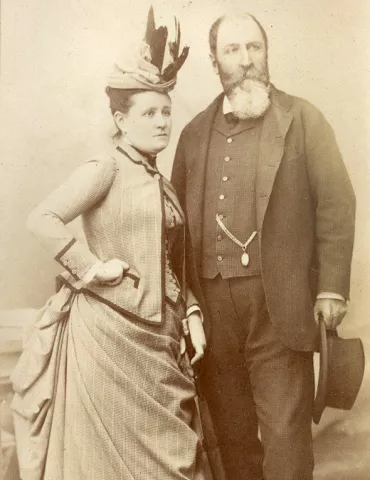
Fermer
Nélie Jacquemart et Edouard André - © Institut de France / Studio Sébert Photographes
Edouard’s cousins had been careful, at the time of the marriage, to prepare a ‘separation of marital property’ contract, which would ensure that the family fortune could be recuperated. But, shortly before his death, Edouard drew up a will that bequeathed all of his property to his wife. Accused of misappropriating the heritage, she won the case.
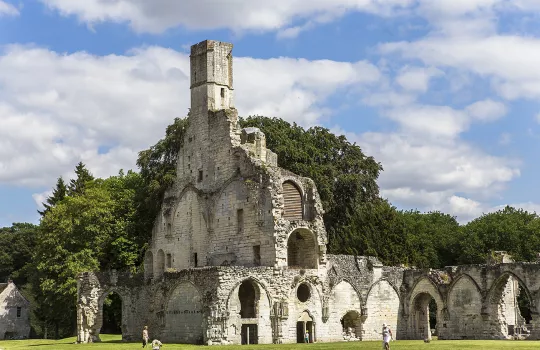
Fermer
Chapelle Primatice, Abbaye de Chaalis - Adobe Stock / photogolfer
Nélie continued to add to the collections on her own. In 1902, she embarked on a trip around the world. She even travelled to the Indies. She was about to go to China and Japan, but when she learned that the royal Abbey of Chaalis was up for sale, she interrupted her travels and her dearest wish came true when she acquired the property.
1869 The construction of the private mansion
1869
The construction of the private mansion
In 1860, Napoléon III entrusted the Prefect, Haussmann, with the implementation of a vast urban planning programme that fundamentally altered the physiognomy of Paris: entire districts were razed to the ground and rectilinear axes were traced out from the periphery to the centre
1869 The construction of the private mansion
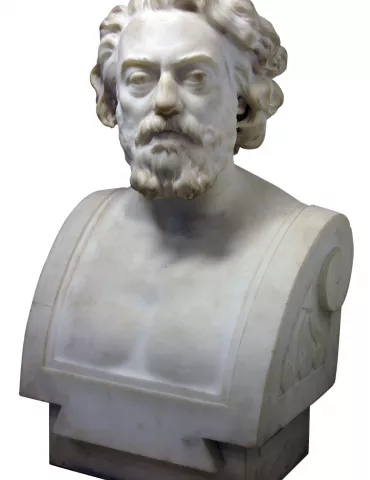
Fermer

Fermer
Vue du boulevard Haussmann à Paris, dont la construction s'est terminée en février 1877, gravure - © Bridgeman Images
Edouard André bought land on the newly created Boulevard Haussmann with the intention of having a mansion built. The project was entrusted to Henri Parent. The latter, who had failed to secure the construction of the new Opera House, which was entrusted to his confrère, Charles Garnier, surpassed himself with the design of the mansion.
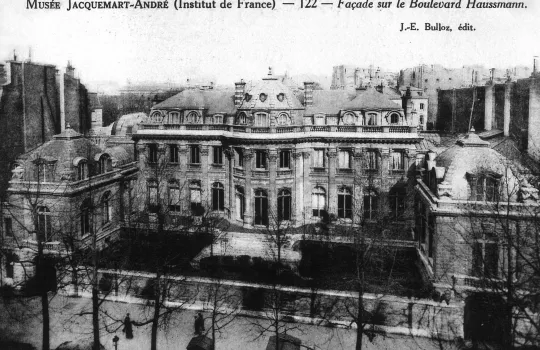
Fermer
Façade sur rue de l'Hôtel en 1913 - © Fonds Bulloz 1913 / Studio Sébert Photographes
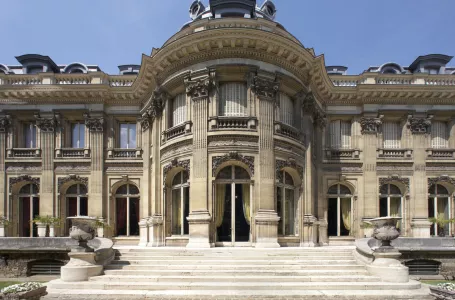
Fermer
Façade sur rue - © Culturespaces / Studio Sébert Photographes
Between 1869 and 1876, Henri Parent created a vast and beautiful building that was greatly inspired by classical models, with its perfectly symmetrical layout and the decorative elements on its facades. The building is set back from the Boulevard Haussmann, creating a break in the alignment that draws the eye.
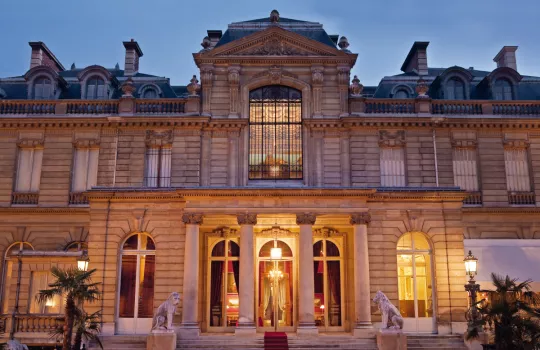
Fermer
Façade sur cour - © Culturespaces / S. Lloyd
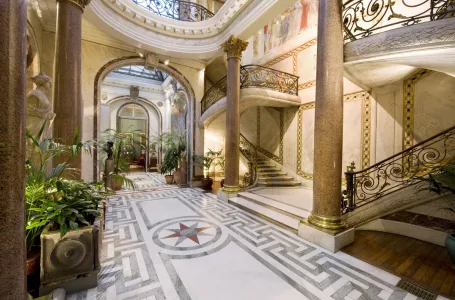
Fermer
Jardin d'hiver - © Culturespaces / Agence Sofiacome
In 1876, the inauguration of the mansion was a major event: the invitees discovered the double spiral staircase, with its improbable equilibrium, and the sumptuousness of the materials. They praised this monumental building just as they had the foyer of the Opera House that Charles Garnier had just completed.
1869 The construction of the private mansion
‘It is impossible to find a more admirable venue. Every fashionable and elegant celebrity was present (...) They all sparkled without exception. (...) In fact, everything was there to turn M. André’s ball into a sensational party, whose magnificence marked its era. The walls of the two entrance rooms, the cloakroom, and the hall were covered with a fragrant screen of violets and camellias. The gold decorations in the double ballroom glittered and sparkled in the light of a thousand candles.’
Extract from an article in L’illustration published to mark the mansion’s inauguration in 1876.
1872 Édouard André and Nélie Jacquemart
1872
Édouard André and Nélie Jacquemart
Édouard André decided to have his portrait painted and commissioned a young artist who had already established a reputation as a successful portraitist: Nélie Jacquemart.
1872 Édouard André and Nélie Jacquemart
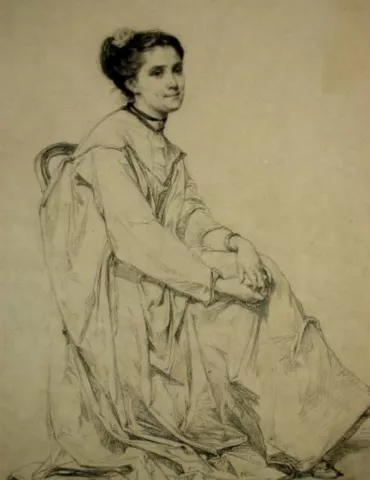
Fermer
Henri Regnault, Nélie Jacquemart à Rome, 1867, Abbaye de Chaalis
Nélie Jacquemart was born on 25 July 1841 to a modest family and she completed her training in the usual manner of young artists at the time: time spent in a well-known studio, submissions to the Salon of History paintings, and then she received her first commissions. She executed one of her first portraits in 1868, that of the daughter of a well-known Parisian publisher.

Fermer
Nélie Jacquemart, Portrait d’Edouard André, 1872, huile sur toile, Musée Jacquemart-André, Paris - © Institut de France / Culturespaces
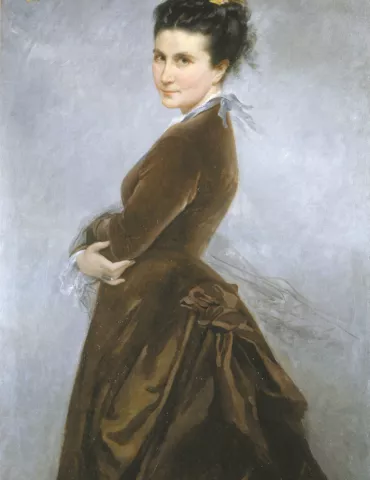
Fermer
Nélie Jacquemart, Autoportrait, vers 1880, huile sur toile, Musée Jacquemart-André, Paris- © Institut de France / Studio Sébert Photographes
In 1881, Edouard and Nélie got married, a marriage of convenience between two very different persons, as he was a Protestant Bonapartist, and she a Catholic living in a royalist milieu. Their union turned out to be a great success. They never had any children and devoted themselves entirely to their shared passion: their collection of works of art.
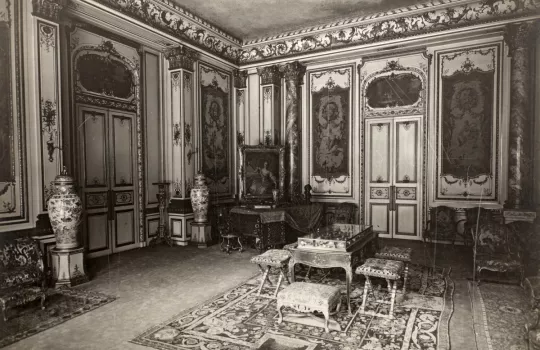
Fermer
Grand Salon, image d'archive - © Culturespaces / Studio Sébert Photographes
One year after their marriage, Nélie decided to have her husband accompany her on a series of trips around Italy, which gave them a chance to visit auction houses and antique dealers. They also went on several trips to the Near East. During this time, they had furnishing and decorative work done on their mansion, in preparation for the installation of the works they bought.
1913 The birth of the Musée Jacquemart-André
1913
The birth of the Musée Jacquemart-André
Nélie passed away on 15 May 1912. The mansion became the property of the Institut de France, through a legacy made by the owner several months earlier. In her will, she stated her wish that the collections be made available to the broadest possible public and exhibited to the crowds of visitors.
1913 The birth of the Musée Jacquemart-André
A highly practical woman, Nélie Jacquemart had thought of every detail, going so far as to stipulate in her will the conditions of the Museum’s inauguration and the exact locations of each work. She asked the Institut de France, as her legatee, to respect these arrangements to the letter.
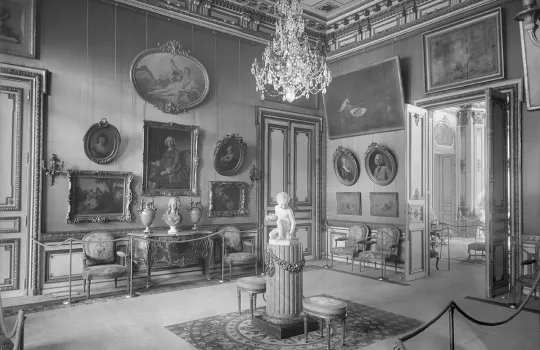
Fermer
Le salon d’attente du musée Jacquemart-André, Hôtel particulier construit avant 1870 par l’architecte Henri Aubert Joseph Parent (1819-1895) pour Edouard André et son épouse Nélie Jacquemart - © Bridgeman Images
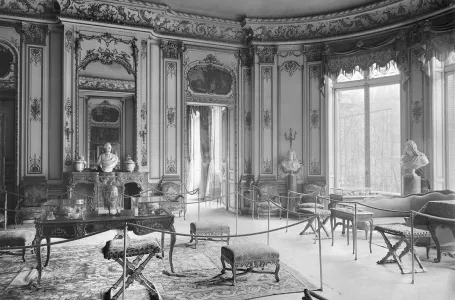
Fermer
Le salon rotonde du musée Jacquemart-André vers 1910-20, Hôtel particulier construit avant 1870 par l’architecte Henri Aubert Joseph Parent (1819-1895) pour Edouard André et son épouse Nélie Jacquemart - © Bridgeman Images
On 8 December 1913, the Museum was inaugurated with great pomp and ceremony by the President of the Republic in person, Raymond Poincare. It was an immediate success, which echoed the fame of the Andrés. Eight hundred visitors attended the Museum the next day, and 1,700 the following Sunday.
1996 Culturespaces the delegated management of the Museum
1996
Culturespaces: the delegated management of the Museum
The Institut de France entrusted Culturespaces with promoting and running the heritage of the Museum, which reopened the same year. The company holds two major temporary exhibitions each year.
1996 Culturespaces the delegated management of the Museum





















